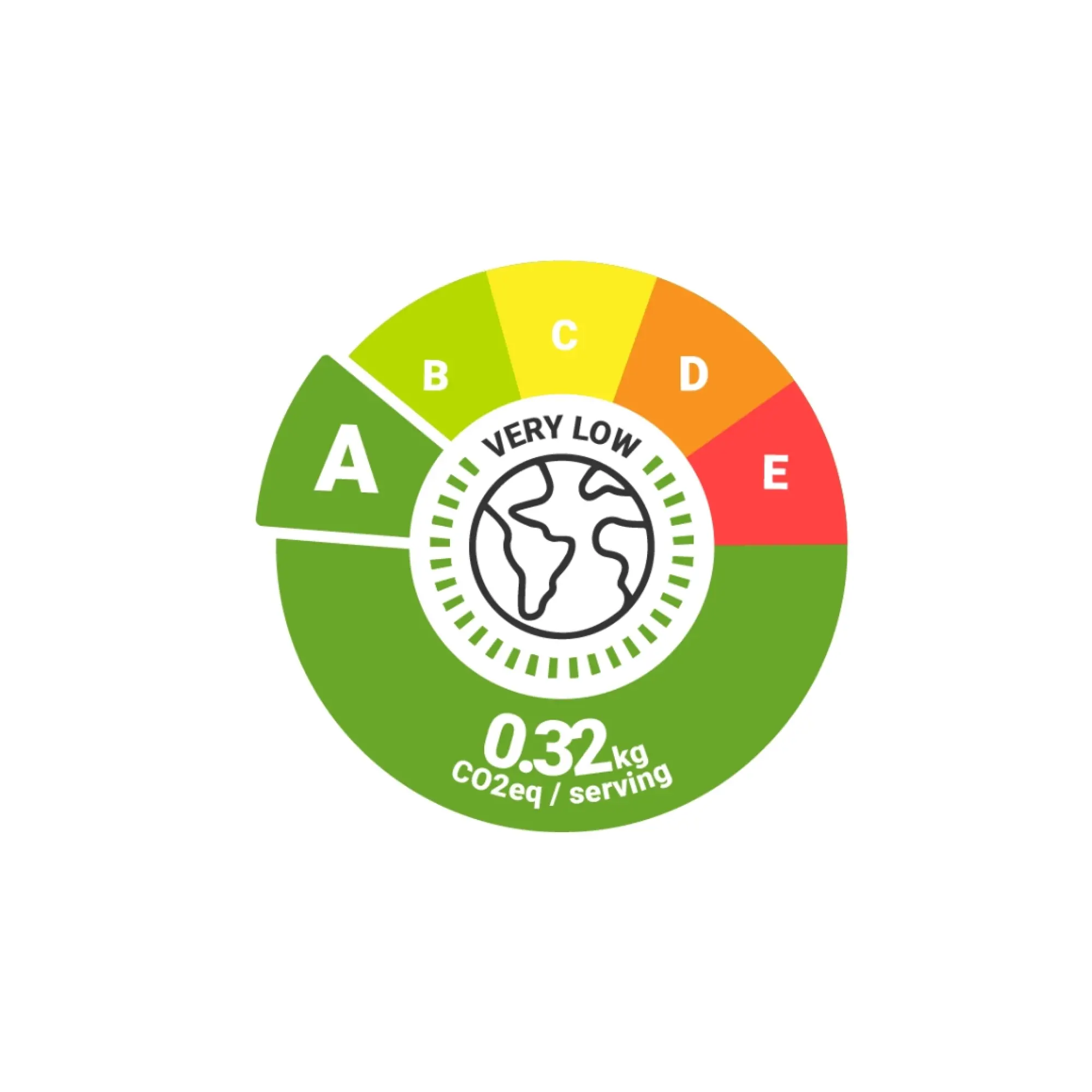A recent study from the Consortium for Labelling for the Environment, Animal welfare, and Regenerative farming (CLEAR) found that a lack of consistent global data is hindering the wider roll-out of carbon labelling on food and drink. This is an issue we take very seriously at Nutritics, which is why we’ve worked hard to create our environmental impact labels from transparent, peer-reviewed data sources. Elbha Purcell, Director of Knowledge Labs at Nutritics takes a closer look…
Consumer demand for environmental labelling
There’s certainly a demand from consumers for easier to read information about the impact of the food and drink we consume. Recent research from the University of Cambridge found that 81% of British people would like to see carbon labelling on food items, but Nutritics research from 2022 found that only one third (35%) currently feel they have the right information to make sustainable food choices when eating or drinking out.
Food labelling is a clear way that hospitality and food service operators can be transparent with their sustainability credentials, as well as meeting the needs of diners. More than half of people (52%) would like to see better labelling on food packaging so they can make informed choices when it comes to adopting a sustainable diet. This number isn’t going to get any smaller in the years ahead.
What do environmental labels look like?
Environmental labels should be simple for consumers to understand and give an immediate snapshot of the impact of a product or dish. Several versions of environmental labels have already been developed. Existing technology such as digital menu management systems already hold masses of information on foods and recipes consumed in the UK, and provide a framework that environmental data can be automatically linked to. An example of this is Foodprint by Nutritics, which offers hospitality businesses the chance to add a carbon and water impact score to their foods and recipes, and already holds data on over 3 million foods.
Foodprint was initially developed by Nutritics under a European Horizon 2020 project “Climate Smart Chef” with an aim to involve chefs as promoters of low emission, nutritious and affordable diets with input from several sustainability experts. Foodprint uses a colour coding and lettering system, similar to what consumers are familiar with seeing on home appliance energy efficiency ratings, with Green ‘A’ showing a lower carbon impact and Red ‘E’ the highest category. Our ratings also display the Carbon dioxide equivalent (CO2eq) per serving in kilograms. Assigning carbon and water data to foods and recipes has additional benefits even when not displayed to consumers such as Scope 3 ESG reporting, complying with catering standards and transitioning towards responsible sourcing practices.
What can you display on an environmental label?
We know that our clients want to share their sustainability journey with their customers, and that carbon tunnelling needs to be avoided when assessing the environmental impact of products. Our Foodprint label provides, via a QR code, the ability to share various other elements of your environmental commitments, targets and progress. For example, this could include details of the welfare credentials of your products and your suppliers or any sustainability practices you have implemented. Information can also be displayed in an easily digestible form to help the customer understand the impact of reducing their carbon and/or water, such as detailing how a carbon saving can be linked to the equivalent of car journey, or water saved in terms of number of showers. All of this information helps to provide a holistic view of a business’ sustainability focus.
Benugo was the first company to display Foodprint carbon labels to their customers in 2022. Since then the labels have been launched by several contract caterers, universities and restaurant groups in the UK. Many restaurants are in the process of rolling out environmental labelling on their products in the months ahead. This said, practice is currently ahead of regulation and alignment is required on the type of system implemented. Similar conversations are happening in the retail channel where the Institute of Grocery Distribution (IGD) is working with industry and other key stakeholders to develop a harmonised solution to environmental labelling to rollout in supermarkets. We expect a lot of movement in this area and look forward to more exciting conversations on this in 2023 with our partners.
The Foodprint solution
We believe that no one should be left behind in the transition to sustainability. Foodprint allows companies to communicate the environmental impact of foods and dishes to consumers through labels, menus and digital displays, empowering consumers to make informed choices relative to planetary boundaries.
Our labels are based on transparent, peer-reviewed scientific data sources — all results can be linked back to peer reviewed LCA academic research. We have more than three million ingredients in our software, which are constantly updated to reflect operator demand.
About Elbha
Elbha Purcell is the Director of Knowledge Labs at Nutritics, helping businesses unlock the hidden value of food data. A registered dietitian, Elbha has experience working within healthcare and the hospitality sector.
